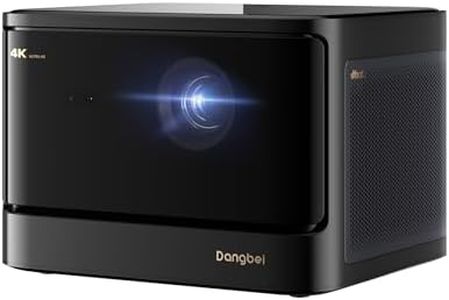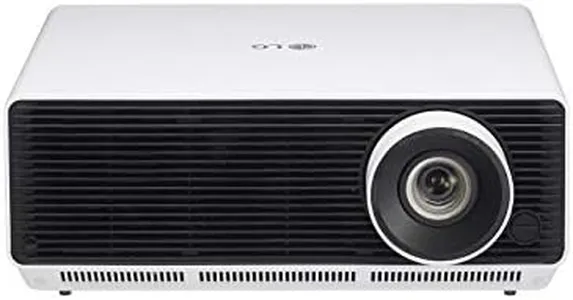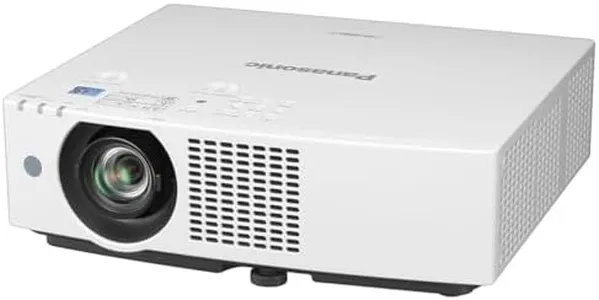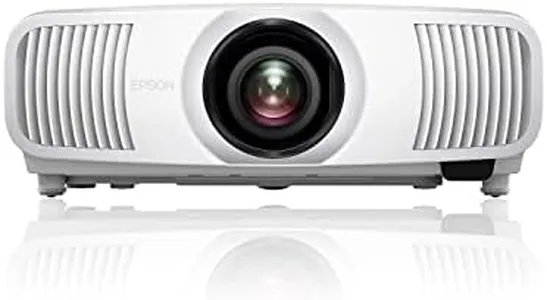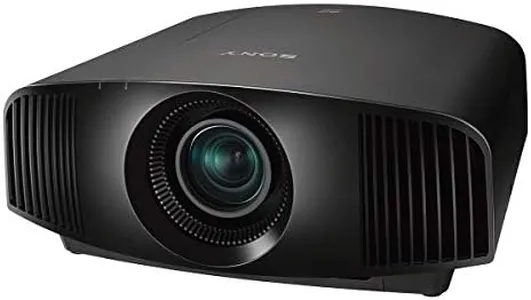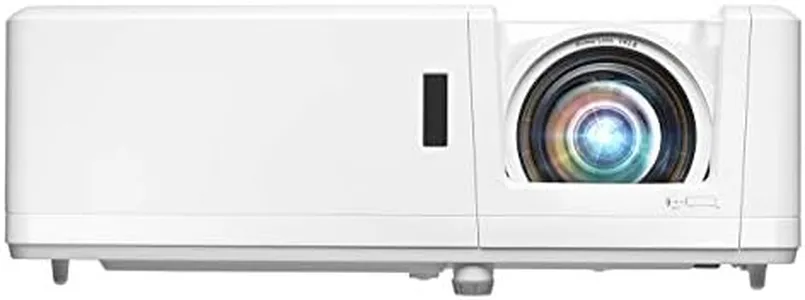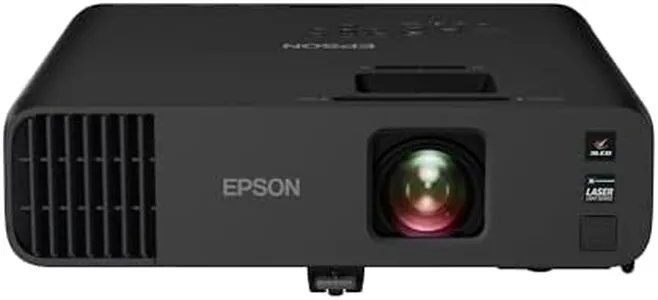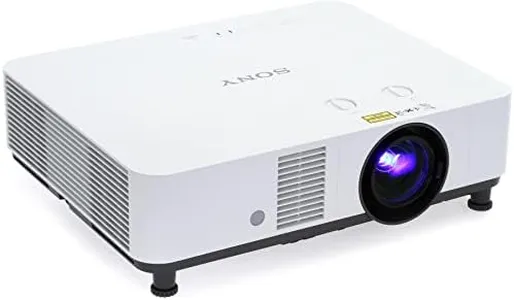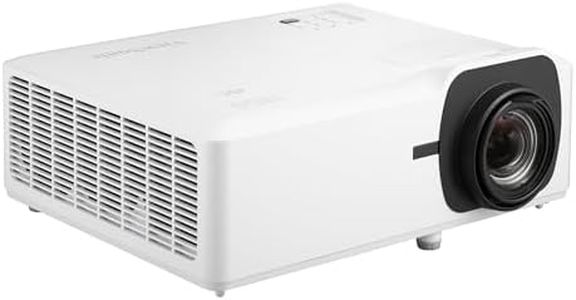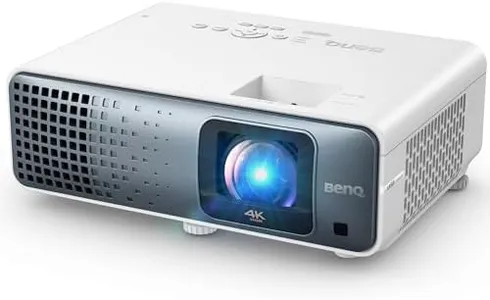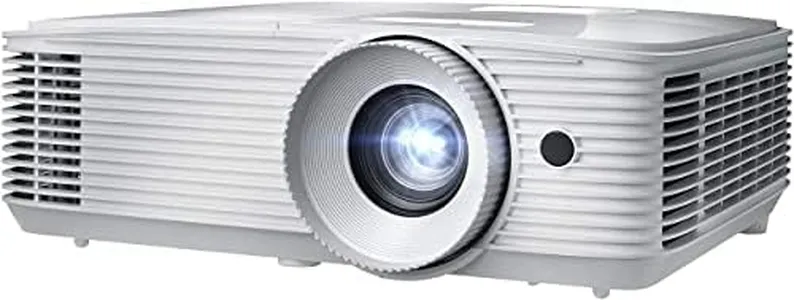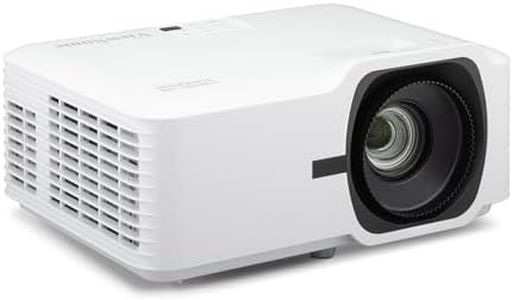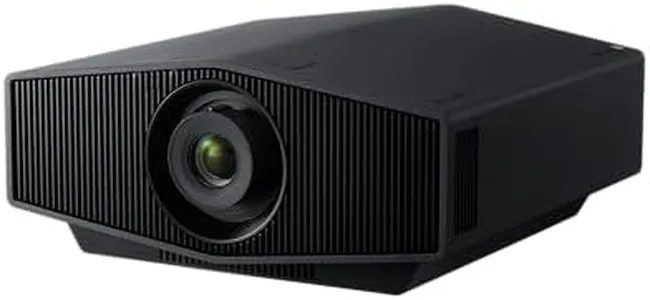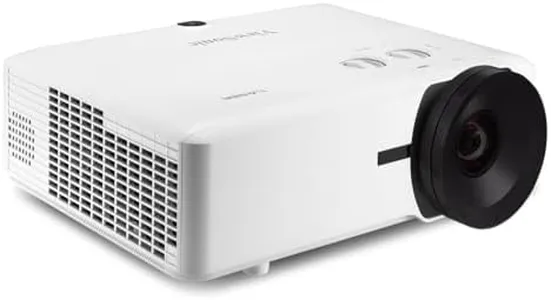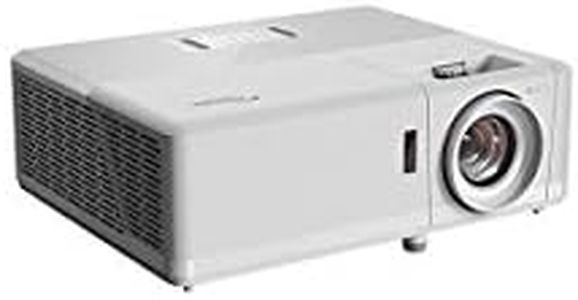10 Best Highest Lumen Projector 2025 in the United States
Our technology thoroughly searches through the online shopping world, reviewing hundreds of sites. We then process and analyze this information, updating in real-time to bring you the latest top-rated products. This way, you always get the best and most current options available.

Our Top Picks
Winner
LG ProBeam 4K (3,840x2,160) Laser Projector with 5,000 ANSI Lumens Brightness, 20,000 hrs. life, 12 Point Warping, & Wireless Connection
Most important from
7 reviews
The LG ProBeam 4K Laser Projector is a powerful device with a brightness of 5,000 ANSI lumens, making it suitable for well-lit environments like classrooms or business presentations. Its 4K UHD resolution (3840 x 2160) delivers sharp and detailed images, enhancing the viewing experience for home cinema, gaming, and professional uses. The projector is HDR10 compatible, providing improved color and contrast for a more vibrant picture quality.
One of its standout features is the impressive lamp life of 20,000 hours, which means less frequent replacements and lower maintenance costs. Additionally, the 12-point warping feature allows for flexible installation and image alignment, even on uneven surfaces. The projector's integrated Wi-Fi and web browser add to its versatility, enabling wireless connections without additional hardware. It offers multiple connectivity options, including USB and HDMI, catering to various input sources.
While it is labeled portable, its size might make it less convenient to move frequently compared to smaller models. The LG ProBeam 4K Laser Projector is a strong contender in the highest-lumen projector category, ideal for users who need a bright, high-resolution projector with advanced features for diverse applications.
Most important from
7 reviews
Panasonic PT-VMZ61 WUXGA LCD Laser Projector, 6200 Lumens, White
The Panasonic PT-VMZ61 is a bright projector with 6200 lumens, making it a strong choice for environments that need clear images even in well-lit rooms, such as classrooms or conference halls. Its WUXGA resolution (1920 x 1200) provides sharp and detailed images, which is slightly better than standard Full HD, so text and visuals look clear. It uses LCD laser technology, which tends to have good color accuracy and longer lamp life compared to traditional projectors.
The built-in speaker adds convenience for basic audio needs, but for better sound quality, external speakers might still be preferred. Connectivity-wise, it offers HDMI, which is common and compatible with most devices. The projector is relatively heavy at 20.5 pounds and has moderate size, so it’s more suited for fixed installations rather than frequent portability.
With its brightness and resolution, this model is well-suited for educational or professional settings where bright, clear projection is essential. It may not be the best option for those seeking a projector primarily for very dark room movie watching or easy portability.
Epson Home Cinema LS11000 4K PRO-UHD Laser Projector, HDR, HDR10+, 2,500 Lumens Color & White Brightness, HDMI 2.1, Motorized Lens, Lens Shift, Focus, Zoom, 3840 x 2160, 120 Hz, Home Theater, Gaming
Most important from
114 reviews
The Epson Home Cinema LS11000 stands out in the high-lumen projector category, making it suitable for home theater enthusiasts and gamers alike. With a brightness of 2,500 lumens for both color and white brightness, it performs well even in rooms with ambient light, ensuring vivid images without compromising quality. The advanced 4K PRO-UHD resolution, combined with precision pixel-shifting technology, delivers an impressive 3840 x 2160 image that is sharp and clear, enhancing the viewing experience significantly.
One of the notable strengths is its excellent HDR capability, supporting HDR10+ and HLG formats. This projector can reproduce a wide range of colors accurately, thanks to its true 3-chip 3LCD technology, which eliminates common issues like rainbowing. The dynamic contrast ratio exceeding 1,200,000:1 further enhances the visual depth, allowing for a captivating cinematic experience.
In terms of connectivity, it offers HDMI 2.1 and additional options like USB and Ethernet, which cater to various devices, making it versatile for different setups. The motorized lens features, including lens shift, focus, and zoom, provide flexibility in installation and adjustment, which is great for those who may not have a dedicated home theater space. However, while it is classified as portable, the size and weight may not make it the best choice for frequent transport. Additionally, its premium features come at a higher price point, which might be a concern for budget-conscious buyers. Some users may also prefer simpler setup options, as the advanced features could be overwhelming for less tech-savvy individuals.
Most important from
114 reviews
Buying Guide for the Best Highest Lumen Projector
When choosing a projector, it's important to consider several key specifications to ensure you get the best fit for your needs. Projectors come with a variety of features and capabilities, and understanding these can help you make an informed decision. The most critical specs to look at include brightness (measured in lumens), resolution, contrast ratio, throw distance, and connectivity options. Each of these specs plays a significant role in the performance and suitability of the projector for different environments and uses.FAQ
Most Popular Categories Right Now
